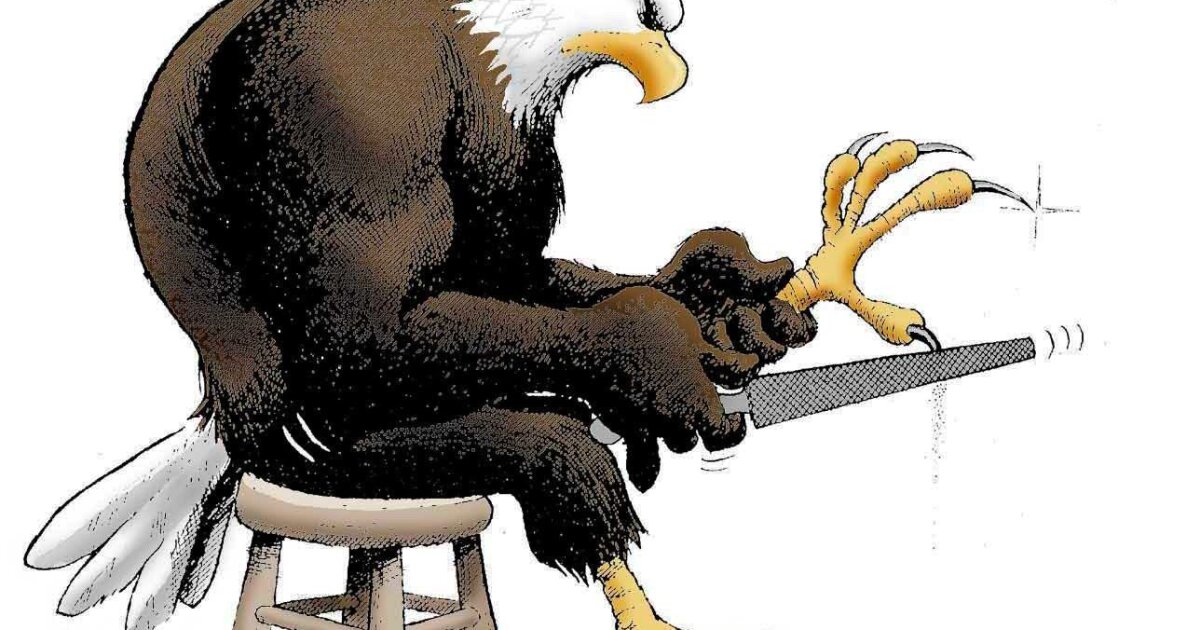
[ad_1]
Breen is a Pulitzer Prize-winning cartoonist at the San Diego Union-Tribune. He lives in Encinitas.
One of the things I remember most about September 11, 2001, was the clear blue sky that morning. At the time, I was telecommuting from my home in Manasquan, New Jersey after being hired by The San Diego Union-Tribune. The Jersey Shore is beautiful this time of year, and Tuesday was no exception. Thinking it was just another day at work, my wife and I fed our young boys breakfast and then went for a run on the sunny boardwalk with the double jogging stroller. When we got home at around 10:40 am, our friend and neighbor, Mary, called. She was almost out of breath and asked us if we were watching the news. I quickly turned on the television and saw that the two World Trade Center towers were gone.
Steve Breen and his sons in 2001.
(Courtesy photo)
Like the rest of the world, I was incredulous. It was difficult to understand the extent of the horror. And as a reporter, I felt stupid to ignore the events that were unfolding just 66 miles north as I ran along the beach. I immediately remembered visits to the World Trade Center, including a cartoon convention the year before where I ate at Windows on the World, the spectacular restaurant that sits atop the North Tower. I selfishly wondered if the sale of our home would be affected since we had a conditional offer from a couple trying to sell their home in New York City. (It would.) And then it was realized that our county, Monmouth, was home to many people commuting to work in lower Manhattan – New Jersey residents with families who also jogged. and strolled on local walks.
Around noon, a call came from Bob Kittle, my editor at the Union-Tribune.
“I think you know your cartoon topic for tomorrow,†he said.
I went to our old detached garage where I had a quiet little studio to sit at my drafting table and concentrate. The cartoon I produced that afternoon depicted a stooped, grief-stricken Statue of Liberty with a dark black background. It seemed like a natural image and I was happy with it … until I saw that many other cartoonists had basically drawn the same for the September 12 diary.
I wanted the piece I designed for Thursday, September 13th to be unique. Instead of grief, I focused on anger and drew a beefy bald eagle, sitting on a stool, sharpening its talons with a file. The visceral cartoon quickly rose to fame and was put on everything from t-shirts and hats to military badges. Someone even hung a copy at Ground Zero.
In October of that year, I drew a cartoon “sequel†of the eagle taking flight when we launched military strikes against terrorist training camps and the Taliban in Afghanistan. I am proud that hundreds of American servicemen wore the image of the eagle on their uniforms during the early days of Operation Enduring Freedom. I drew a third and final eagle cartoon in the series when our special forces killed Osama bin Laden in 2011. The first and only cartoon trilogy I ever made took almost 10 years. I generally don’t like the idea of ​​revenge, but in my opinion, we had to react forcefully to the worst terrorist attacks in US history.
It was both interesting and frustrating to see the original eagle design used in pro-Iraqi war rallies in 2003, because unlike Afghanistan, I was completely opposed to the new conflict. I remember seeing this cartoon enlarged and recorded on a military Humvee in Baghdad or somewhere while watching a report. “Hey, wait a minute! Don’t they realize that they are using my cartoon to support something that I am opposed to? I thought reflexively. The answer, of course, is no. Cartoons come to life and people see what they want to see in them.
Sometimes people take editorial cartoons and edit them using Photoshop or something similar so that the message goes against the original intent. This has happened a few times with the eagle cartoon, and it was particularly infuriating, but then again, there’s not much you can do in most cases.
And then there are times when the story survives the cartoon. Afghanistan is still in the news, but it’s under very different circumstances today. Over the past decade or more, I have made several quagmire-themed cartoons related to our involvement there, featuring images of quicksand and mazes. The feelings that fueled the original eagle cartoon faded as the “war forever” dragged on for 20 years. The anger eventually turned into a fuzzy confusion about our goal.
But in 2001, our mission was as clear as a September sky.
[ad_2]